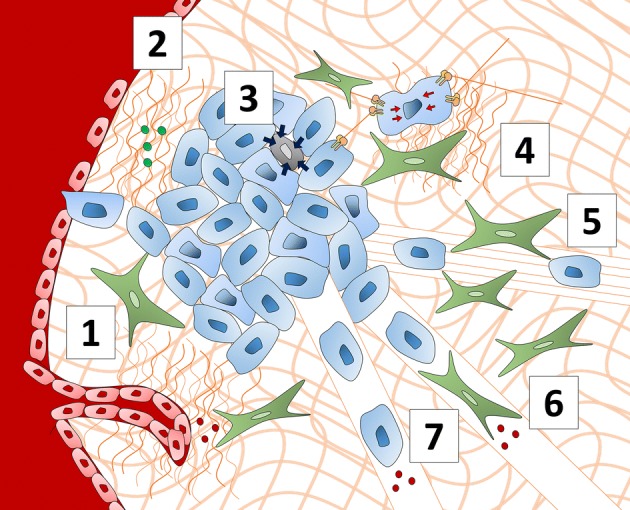Figure 3.

Consequences of cell–cell mechanical communication in cancer. Cell–cell mechanical communication in cancer results in a variety of cancer-promoting behaviors. (1) Increased ECM crosslinking via LOX and ECM remodeling via proteases enhance sprouting angiogenesis and enable endothelial cells to migrate through the ECM to form capillaries. (2) Increased ECM rigidity decreases the structural integrity and barrier function of blood vessels. (3) Cancer cells exhibit mechanical competition as they must outcompete less-mechanically fit neighboring cells via compressive forces that induce apoptosis. (4) Cancer cells sense increased matrix stiffness through CMACs and transmit these mechanical signals to nearby cells by exerting traction forces on the matrix. (5) CAFs in the tumor stroma align matrix fibers which cancer cells use as tracks to invade away from the primary tumor. (6) Fibroblasts act as leader cells, using matrix-degrading proteases to form microtracks in the ECM, which cancer cells use to invade away from the primary tumor in a form of collective migration. (7) Cancer cells secrete matrix-degrading proteases to form microtracks in the ECM to invade away from the primary tumor.
